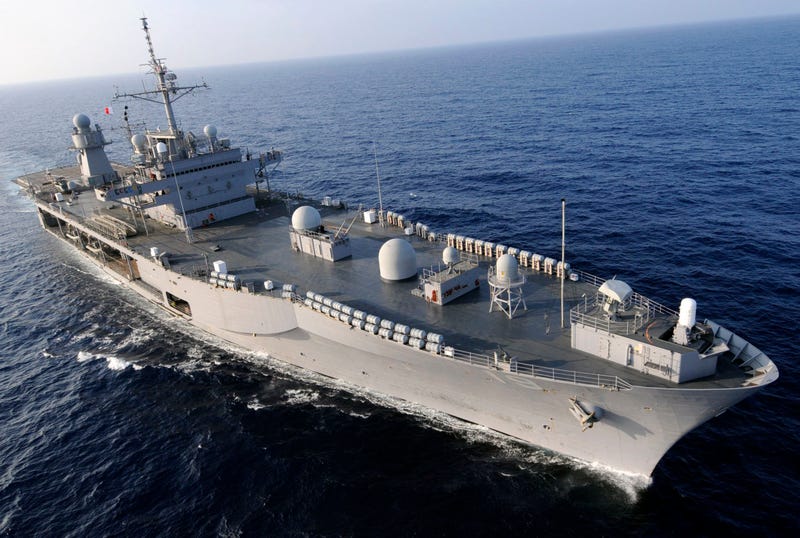China’s Threat to Commercial Shipping in the South China Sea
The Soviet precedent.
By
for The Diplomat
March 07, 2016
What does U.S intelligence analysis of the Soviet threat to commercial shipping in Asia or the Atlantic tell us about the way in which some Western governments today exaggerate China’s potential threat to commercial shipping in the South China Sea arising from action in the Spratly and Paracel Islands?
The two situations are very different geopolitically but there are interesting comparisons to be made in terms of military mission priorities, not least given that the Soviet Pacific Fleet at its peak between 1977 and 1986 was at least broadly comparable in size to the entire Chinese Navy today, and given that the Soviet armed forces as whole were immensely more powerful than the Chinese armed forces are today.
Bearing in mind that numerical comparisons of naval ship numbers are highly problematic, for
, here is a comparison of the
and the
in platform types in 2015:
Soviet Pacific Fleet 1977 Chinese Navy 2015
Attack Submarines 75 68
SSBNs 25 4
Major Surface Combatants 58 78
Numbers do count in an antishipping campaign. In World War II, in part because of its interest in attacking commercial shipping in the Atlantic, and in part because of Allied success in defeating the war on seaborne commerce, Germany built and lost over 700 submarines between 1939 and 1945. Now that is militarization — but even so, Germany could not stop the U.K.-bound trans-Atlantic shipping. It had lost the War in the Atlantic by 1943. In the month of May 1943 alone, Germany lost over 40 submarines, equivalent to the entire complement of today’s Chinese navy fleet of modern attack submarines.
But it is to mission analysis rather than numbers that we could more usefully look, not least because weapons systems count more than platforms and we would need war gaming to allow any realistic comparisons of the interaction of platforms and weapons systems.
On the subject of naval missions, the
, at the height of Reagan era campaign for military preparedness against the Soviet Union, that attacks on merchant shipping were not a high priority for the Soviet navy in a war with NATO, and if they did attack shipping it would be in port or the approaches through mining or aerial attack (not in open ocean areas). The assessment cited several reasons, including the existence of higher priority military missions and the low likelihood of success in an ant-shipping campaign if the NATO alliance was determined to oppose Soviet actions.
In a Budget Brief in 1977, the
, particularly of oil to Japan, as one of the “purported” rationales for U.S. general purpose forces there: “it is the attack submarine component of the Soviet Navy’s Pacific Fleet that is of principal concern to the Japanese because of the threat that those submarines pose to merchant vessels.” But the report went on to discuss what I see as probably the main reason why the United States was keen to use the commercial shipping argument: “Perhaps the most important U.S. interest in Asia is in the continued orientation of Japan toward the West.” It was to bind Japan to the United States that American officials repeatedly canvassed in public the potential or putative Soviet threat because the Japanese felt highly vulnerable to it. But even then the threat to Japanese shipping was, according to U.S. agencies, never in the open ocean areas in the unlikely event it were ever to manifest itself, but in close-in areas in easy reach of Soviet land-based air assets.
In the Soviet case, when asked to describe the main missions of the Red navy, senior U.S. officials almost never referred to attacks on commercial shipping as a mission for which it trained or planned. It is the same today with the U.S. official statements on the missions of the PLA Navy.
On the contrary, in 2015, the Office of Naval Intelligence
that China is keen to protect international shipping (which surely means not attack it): “With a heavy reliance on maritime commerce, Beijing now has a vested interest in ensuring the security of international trade.” China also says in its
that protection of seaborne trade is a high priority for it.
The 2015 ONI report identified the two highest priority naval missions for China as being prepared to fight in a Taiwan-related conflict and maintaining the security of territorial sovereignty. It identified protection of commercial shipping, not attacking it, as a third priority.
In a military crisis with Taiwan, China would almost certainly consider some sort of naval blockade against it, including an implied threat to commercial shipping. But if any military action was taken against commercial shipping, it would be in areas close to Taiwan, not in areas affected by a small Chinese military presence in the Spratly Islands or the Paracel Islands. Such a blockade would most likely be a naval quarantine exercise (blockade) not a war on shipping that saw China sinking Japanese, American, Singaporean, and Australian commercial ships or cargoes. A war between China and Taiwan has become less likely in that past 20 years, not more likely.
There are many reasons why China’s actions in the territorial disputes over the Spratly and Paracel Islands do not pose a threat to commercial shipping in the open areas of the South China Sea (3.5 million square kilometers), as I argued in the
. There are also many reasons why certain countries might seek to misrepresent the threat. Some of these reasons may seem to be defensible. But the impact on regional stability and peace of exaggerating or inventing threats from China is on balance almost certainly negative.

